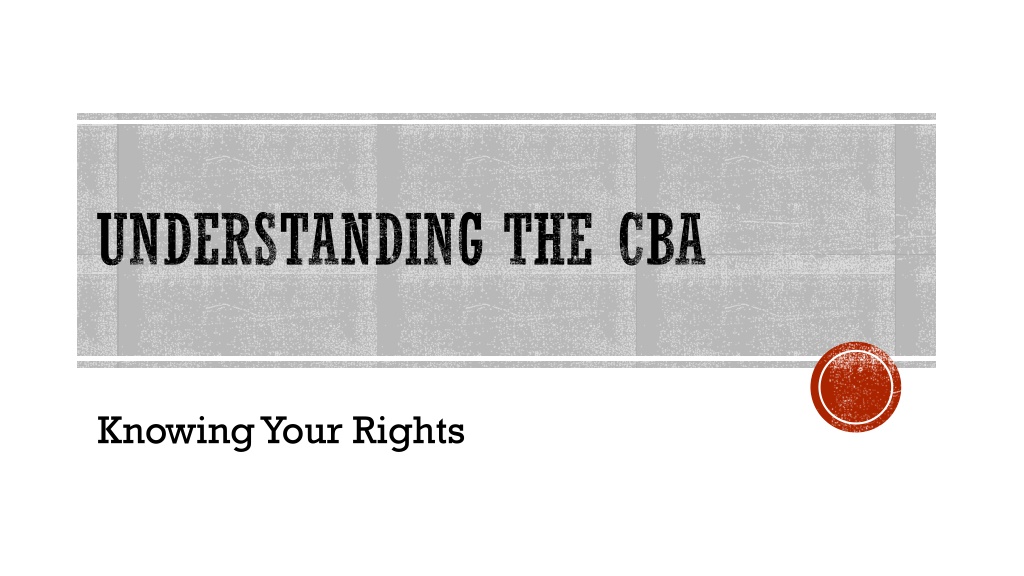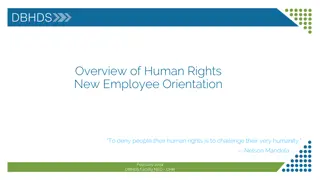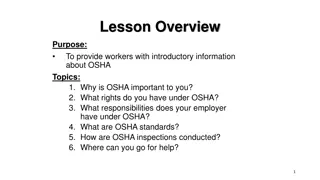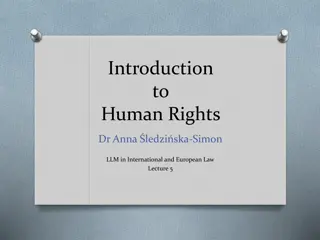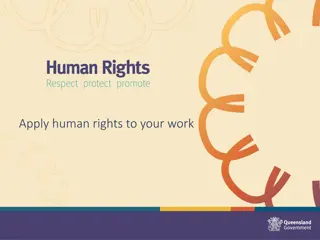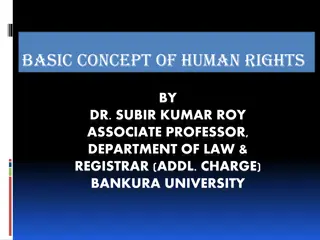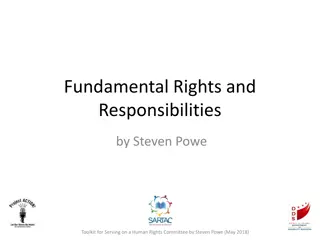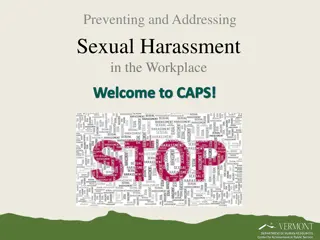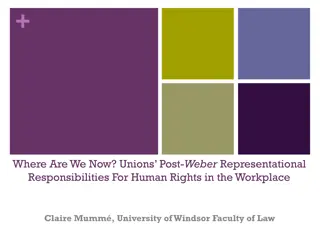Understanding Your Rights and Responsibilities in the Workplace
Explore various aspects of employee rights and responsibilities outlined in the Collective Bargaining Agreement (CBA), including Weingarten rights, department procedures, peer evaluation, access to personnel and human resources files, and the importance of following procedures for effective union representation and defense. Upholding these rights ensures a fair and balanced work environment.
- Employee rights
- Workplace responsibilities
- Collective Bargaining Agreement
- Union representation
- Labor relations
Download Presentation

Please find below an Image/Link to download the presentation.
The content on the website is provided AS IS for your information and personal use only. It may not be sold, licensed, or shared on other websites without obtaining consent from the author. Download presentation by click this link. If you encounter any issues during the download, it is possible that the publisher has removed the file from their server.
E N D
Presentation Transcript
UNDERSTANDING THE CBA Knowing Your Rights
WEINGARTEN RIGHTS Section 7 of the National Labor Relations Act (NLRA) protects employees right to self organization and to engage in other concerted activities for the purpose of self organization or other mutual aid and protection. Among these rights is the right to request representation during an investigatory interview. Employers violate the NLRA if they conduct an employee s request for representation or retaliate for making the request. If an attempt is made to proceed with an investigation with out union representation, you should request representation.
DEPARTMENT PROCEDURES The CBA indicates that the chairperson must consult with the Department Personnel Committee in constructing the course schedule. All full-time members of a department are eligible to run for election to it s DPC. DPC s are comprised of six members (five members and a non-voting chair who does not have to be the chair of the department). Advance notification of ten business days must be given in an advance of a DPC meeting at which an evaluation of or a recommendation regarding a faculty member is to made. Voting for promotion and tenure may be limited by rank depending on the DPC guidelines of individual departments.
ARTICLE VI: PEER EVALUATION Section 1. (a) The responsibility for the evaluation of the credentials, performance, and professional activities of all faculty members rests principally but not exclusively with their peers. Ongoing misuse of student evaluations may violate this clause The union recommends that unit members compile other forms of evidence of teaching effectiveness
PERSONNEL FILE AND HUMAN RESOURCES FILE The University maintains both a personnel file and a human resources file. The same rights apply to each file: Article VII dictates that a faculty member will have reasonable access to his or her file, will be notified when a letter is placed in a file, and be afforded the opportunity to respond.
RIGHTS AND RESPONSIBILITIES Rights are best understood in relationship to responsibilities. It is important that we follow our own procedures as dictated by the CBA. Not following our own procedures weakens the union and makes us more vulnerable when the administration fails to follow them. The union may not be able effectively defend unit members who do not adhere to their professional responsibilities as defined by the CBA.
ACADEMIC FREEDOM Faculty have purview over curriculum, pedagogy and course content. Academic freedom includes complete autonomy over intellectual inquiry in the classroom and in scholarly pursuits. This does not mean that one can say anything in the classroom. Any statements that are directed against a protected group as defined by law can lead to disciplinary proceedings. It is best to avoid derogatory or inflammatory words with a history of discrimination attached to them regardless of the context in which they are being used even if they are not being used in a derogatory way.
